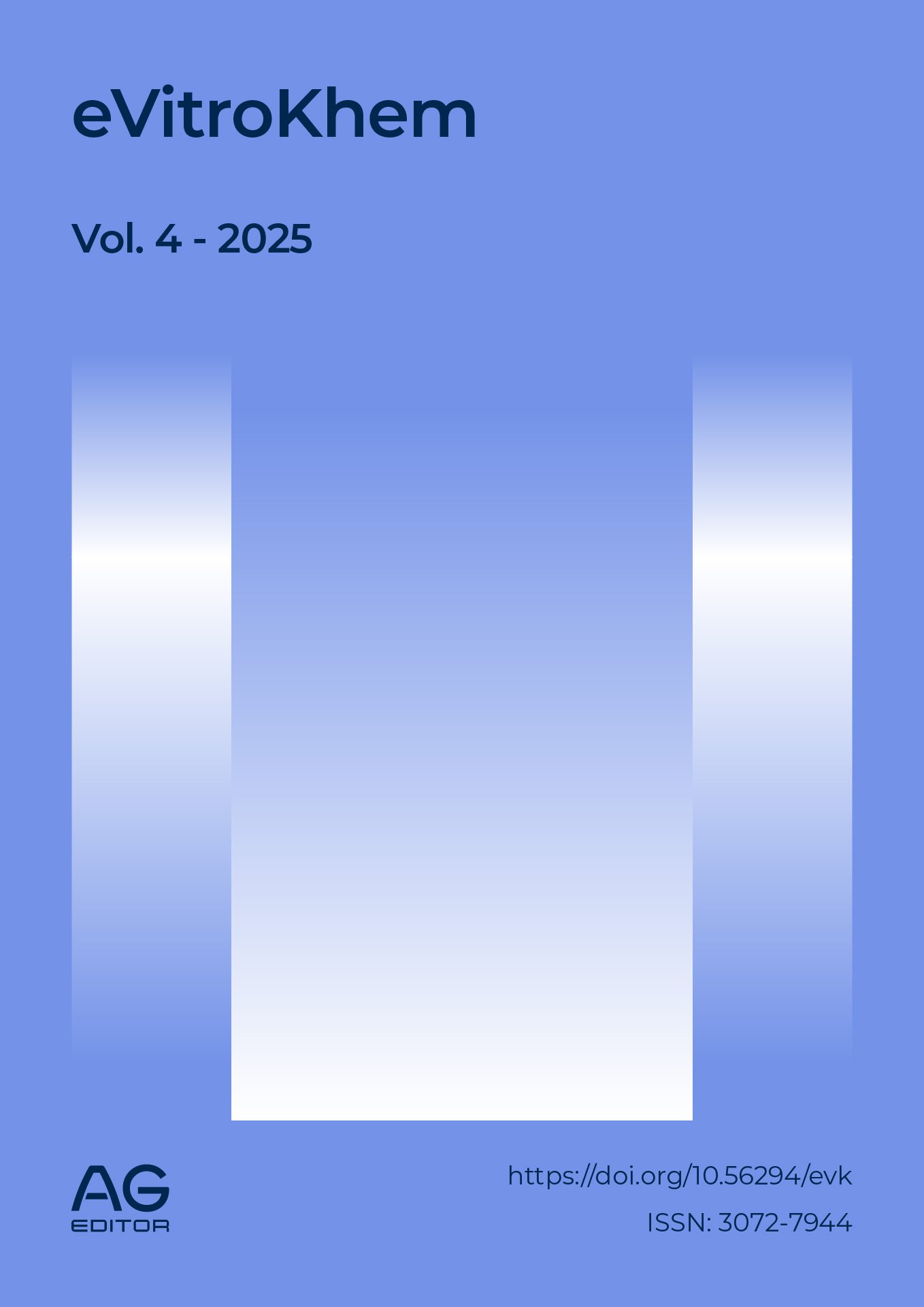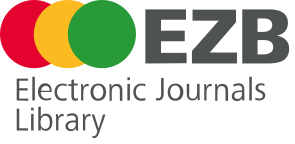Portable Technologies in Clinical Biochemistry, from the laboratory to the point of care
DOI:
https://doi.org/10.56294/evk2025160Keywords:
Clinical Biochemistry, Clinical Laboratory, Point-of-Care Testing, Nanoparticles, Wearable DevicesAbstract
Constant advances in science, technology, and innovation have favored the development of biomedical sciences, providing them with tools such as computer science and artificial intelligence. In the field of clinical biochemistry, advances are needed to optimize and accelerate timely diagnosis. This article aims to describe the advantages and usefulness of POCT devices for diagnosis in clinical biochemistry. Portable technologies in clinical biochemistry applied to laboratory diagnosis promise to overcome the barriers of conventional techniques (time, infrastructure, cost, sensitivity, and specificity). Their usefulness varies, being applicable in response to pandemics, for the management of chronic diseases, promoting accessibility and equity in health, and improving the efficiency of the system while empowering the patient. Similarly, the possibility of integration into wearable devices and smartphones makes it an accessible and attractive medium. Use cases were identified that demonstrate not only its theoretical usefulness but also its actual capacity for use in practice
References
1. Rojas Puentes MP, Parada CJ, Leal Pabón J. ESTRUCTURAS DESGLOSADAS DE TRABAJO (EDT) EN LA GESTIÓN DE ALCANCE DE PROYECTOS DE DESARROLLO DE SOFTWARE. RCTA 2023;1:51-8. https://doi.org/10.24054/rcta.v1i39.1375. DOI: https://doi.org/10.24054/rcta.v1i39.1375
2. Medina-Barahona CJ, Mora GA, Calvache-Pabón C, Salazar-Castro JA, Mora-Paz HA, Mayorca-Torres D. PROPUESTA DE ARQUITECTURA IOT ORIENTADA A LA CREACIÓN DE PROTOTIPOS PARA SU APLICACIÓN EN PLATAFORMAS EDUCATIVAS Y DE INVESTIGACIÓN. RCTA 2023;1:118-25. https://doi.org/10.24054/rcta.v1i39.1405. DOI: https://doi.org/10.24054/rcta.v1i39.1405
3. Jiménez Pérez GA, Hernández De La Cruz JM. Applications of Artificial Intelligence in Contemporary Sociology. LatIA 2024;1:12. https://doi.org/10.62486/latia202412. DOI: https://doi.org/10.62486/latia202412
4. Alsharksi AN, Sirekbasan S, Gürkök-Tan T, Mustapha A. From Tradition to Innovation: Diverse Molecular Techniques in the Fight Against Infectious Diseases. Diagnostics 2024;14:2876. https://doi.org/10.3390/diagnostics14242876. DOI: https://doi.org/10.3390/diagnostics14242876
5. Gupta E, Saxena J, Kumar S, Sharma U, Rastogi S, Srivastava VK, et al. Fast Track Diagnostic Tools for Clinical Management of Sepsis: Paradigm Shift from Conventional to Advanced Methods. Diagnostics 2023;13:277. https://doi.org/10.3390/diagnostics13020277. DOI: https://doi.org/10.3390/diagnostics13020277
6. Ferreira Frasson LDS, Chiachiara D. Combined diagnosis of CNS infections in the post-surgical setting. South Health and Policy 2025;1:11. https://doi.org/10.56294/shp202211. DOI: https://doi.org/10.56294/shp202211
7. Lazaga-González L, Leyva-Samuel L, Ferrer-Ballester R, García-Bacallao Y, Pérez-González Y, Carbonell-Mesa IE. Malaria behavior in adult patients. Cacolo Municipal Hospital, Lunda Sul, Angola. South Health and Policy 2023;2:61-61. https://doi.org/10.56294/shp202361. DOI: https://doi.org/10.56294/shp202361
8. Treger RS, Menza TW, Truong TT, Lieberman JA. Advances in Syphilis Diagnostics to Address the 21st-Century Epidemic. Clinical Chemistry 2025:hvaf072. https://doi.org/10.1093/clinchem/hvaf072. DOI: https://doi.org/10.1093/clinchem/hvaf072
9. Mukherjee R, Vidic J, Auger S, Wen H-C, Pandey RP, Chang C-M. Exploring Disease Management and Control through Pathogen Diagnostics and One Health Initiative: A Concise Review. Antibiotics 2023;13:17. https://doi.org/10.3390/antibiotics13010017. DOI: https://doi.org/10.3390/antibiotics13010017
10. Liu Q, Jin X, Cheng J, Zhou H, Zhang Y, Dai Y. Advances in the application of molecular diagnostic techniques for the detection of infectious disease pathogens (Review). Mol Med Rep 2023;27:104. https://doi.org/10.3892/mmr.2023.12991. DOI: https://doi.org/10.3892/mmr.2023.12991
11. Kubina R, Dziedzic A. Molecular and Serological Tests for COVID-19. A Comparative Review of SARS-CoV-2 Coronavirus Laboratory and Point-of-Care Diagnostics. Diagnostics 2020;10:434. https://doi.org/10.3390/diagnostics10060434. DOI: https://doi.org/10.3390/diagnostics10060434
12. Brendish NJ, Poole S, Naidu VV, Mansbridge CT, Norton NJ, Wheeler H, et al. Clinical impact of molecular point-of-care testing for suspected COVID-19 in hospital (COV-19POC): a prospective, interventional, non-randomised, controlled study. The Lancet Respiratory Medicine 2020;8:1192-200. https://doi.org/10.1016/S2213-2600(20)30454-9. DOI: https://doi.org/10.1016/S2213-2600(20)30454-9
13. Valera E, Jankelow A, Lim J, Kindratenko V, Ganguli A, White K, et al. COVID-19 Point-of-Care Diagnostics: Present and Future. ACS Nano 2021;15:7899-906. https://doi.org/10.1021/acsnano.1c02981. DOI: https://doi.org/10.1021/acsnano.1c02981
14. Saha A, Andrewartha K, Badman SG, Tangey A, Smith KS, Sandler S, et al. Flexible and Innovative Connectivity Solution to Support National Decentralized Infectious Diseases Point-of-Care Testing Programs in Primary Health Services: Descriptive Evaluation Study. J Med Internet Res 2023;25:e46701. https://doi.org/10.2196/46701. DOI: https://doi.org/10.2196/46701
15. Jo S, Sung D, Kim S, Koo J. A review of wearable biosensors for sweat analysis. Biomed Eng Lett 2021;11:117-29. https://doi.org/10.1007/s13534-021-00191-y. DOI: https://doi.org/10.1007/s13534-021-00191-y
16. Wad M, Hussein AA, Almaamori MH. Electrochemical Sensors based on Conductive Polymers Incorporate of Nano Material for the Detection of Hydrogen Peroxide (H2O2). Salud, Ciencia y Tecnología - Serie de Conferencias 2024;3:850-850. https://doi.org/10.56294/sctconf2024850. DOI: https://doi.org/10.56294/sctconf2024850
17. Chen M, Zhang J, Ji G, Wang H, Zhu B, Chen C, et al. Universal Flexible Wearable Biosensors for Noninvasive Health Monitoring. ACS Appl Mater Interfaces 2025;17:20741-55. https://doi.org/10.1021/acsami.4c22623. DOI: https://doi.org/10.1021/acsami.4c22623
18. Sidiq M, Chahal A, Gupta S, Reddy Vajrala K. Advancement, utilization, and future outlook of Artificial Intelligence for physiotherapy clinical trials in India: An overview. Interdisciplinary Rehabilitation / Rehabilitacion Interdisciplinaria 2023;4:73. https://doi.org/10.56294/ri202473. DOI: https://doi.org/10.56294/ri202473
19. Xu J, Fang Y, Chen J. Wearable Biosensors for Non-Invasive Sweat Diagnostics. Biosensors 2021;11:245. https://doi.org/10.3390/bios11080245. DOI: https://doi.org/10.3390/bios11080245
20. Schary W, Paskali F, Rentschler S, Ruppert C, Wagner GE, Steinmetz I, et al. Open-Source, Adaptable, All-in-One Smartphone-Based System for Quantitative Analysis of Point-of-Care Diagnostics. Diagnostics 2022;12:589. https://doi.org/10.3390/diagnostics12030589. DOI: https://doi.org/10.3390/diagnostics12030589
21. Muhamad N, Youngvises N, Plengsuriyakarn T, Meesiri W, Chaijaroenkul W, Na-Bangchang K. MyACR: A Point-of-Care Medical Device for Determination of Albumin–Creatinine Ratio (uACR) in Random Urine Samples as a Marker of Nephropathy. Diagnostics 2024;14:1702. https://doi.org/10.3390/diagnostics14161702. DOI: https://doi.org/10.3390/diagnostics14161702
22. Ra M, Muhammad MS, Lim C, Han S, Jung C, Kim W-Y. Smartphone-Based Point-of-Care Urinalysis Under Variable Illumination. IEEE Journal of Translational Engineering in Health and Medicine 2018;6:1-11. https://doi.org/10.1109/JTEHM.2017.2765631. DOI: https://doi.org/10.1109/JTEHM.2017.2765631
23. Chan P, Wong C, Poh YC, Pun L, Leung WW, Wong Y, et al. Diagnostic Performance of a Smartphone‐Based Photoplethysmographic Application for Atrial Fibrillation Screening in a Primary Care Setting. JAHA 2016;5:e003428. https://doi.org/10.1161/JAHA.116.003428. DOI: https://doi.org/10.1161/JAHA.116.003428
24. Rubegni G, Zeppieri M, Russo A, Castellino N, Fruschelli M, Hadjistilianou T, et al. Comparing New Smartphone-Connected Handheld Ultrasound Device vs. Traditional Ultrasound in Vitreo-Retinal Disease Diagnosis. Diagnostics 2024;14:1961. https://doi.org/10.3390/diagnostics14171961. DOI: https://doi.org/10.3390/diagnostics14171961
25. Bacariza J, Gonzalez FA, Varudo R, Leote J, Martins C, Fernandes A, et al. Smartphone-based automatic assessment of left ventricular ejection fraction with a silicon chip ultrasound probe: a prospective comparison study in critically ill patients. British Journal of Anaesthesia 2023;130:e485-7. https://doi.org/10.1016/j.bja.2023.02.032. DOI: https://doi.org/10.1016/j.bja.2023.02.032
26. Gonzalez-Argote J, Castillo-González W. Productivity and Impact of the Scientific Production on Human-Computer Interaction in Scopus from 2018 to 2022. Multidisciplinar (Montevideo) 2023;1:10-10. https://doi.org/10.62486/agmu20233. DOI: https://doi.org/10.62486/agmu20233
27. Abbott Diagnostics Scarborough, Inc. Abbott BinaxNOWTM COVID-19 Ag Card, s. f.
28. Chin CD, Laksanasopin T, Cheung YK, Steinmiller D, Linder V, Parsa H, et al. Microfluidics-based diagnostics of infectious diseases in the developing world. Nat Med 2011;17:1015-9. https://doi.org/10.1038/nm.2408. DOI: https://doi.org/10.1038/nm.2408
29. Vashist SK, Luong JHT. Smartphone-Based Point-of-Care Technologies for Mobile Healthcare. Point-of-Care Technologies Enabling Next-Generation Healthcare Monitoring and Management, Cham: Springer International Publishing; 2019, p. 27-79. https://doi.org/10.1007/978-3-030-11416-9_2. DOI: https://doi.org/10.1007/978-3-030-11416-9_2
30. Tharakan S, Faqah O, Asghar W, Ilyas A. Microfluidic Devices for HIV Diagnosis and Monitoring at Point-of-Care (POC) Settings. Biosensors (Basel) 2022;12:949. https://doi.org/10.3390/bios12110949. DOI: https://doi.org/10.3390/bios12110949
Published
Issue
Section
License
Copyright (c) 2025 Gisselle Diaz Breto, Yohanka Pérez Alvarez, Felix António Rego Rodríguez (Author)

This work is licensed under a Creative Commons Attribution 4.0 International License.
The article is distributed under the Creative Commons Attribution 4.0 License. Unless otherwise stated, associated published material is distributed under the same licence.






